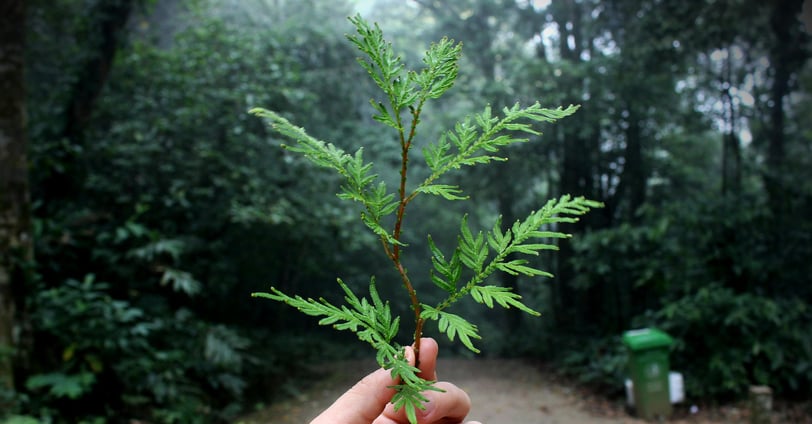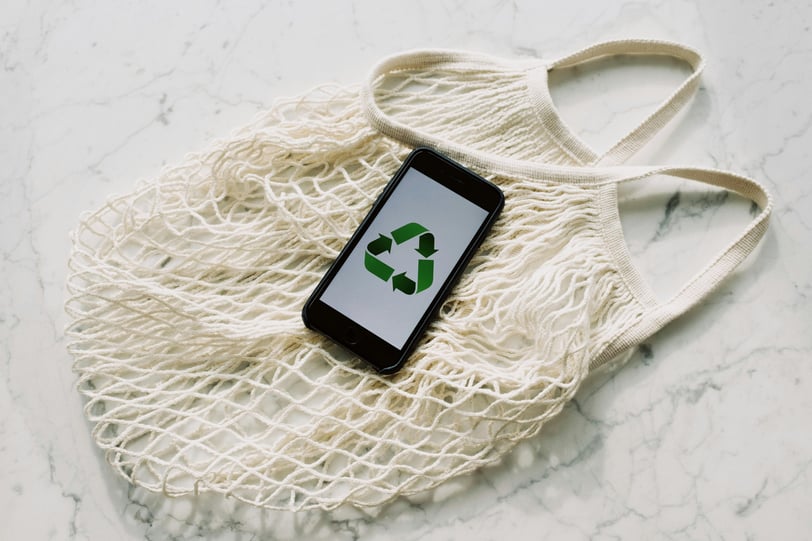Navigating Greenwashing: How to Identify Truly Sustainable Products and Brands
Navigating greenwashing is key to making eco-friendly purchases. Learn how to identify sustainable brands and avoid misleading claims with practical tips and resources.
NEW INSUSTAINABLE LIVING


With eco-consciousness on the rise, companies are keen to market products as "sustainable" or "environmentally friendly." But while some brands are genuinely committed to reducing their environmental impact, others are taking shortcuts. This practice—known as greenwashing—can mislead well-intentioned consumers and cause unintended harm.
Greenwashing isn’t just a nuisance; it has real consequences. By diverting attention from authentic eco-friendly efforts, greenwashing can slow down environmental progress and erode trust in brands. As a conscious shopper, learning how to spot greenwashing is essential to making choices that genuinely align with your sustainable values.
What is Greenwashing? The Hidden Truth Behind Eco-Claims
Greenwashing occurs when companies use deceptive tactics to market themselves as more sustainable or eco-friendly than they really are. These brands often rely on clever language, imagery, or exaggerated claims to create a false impression of environmental responsibility. Here are some actionable tips for identifying and avoiding greenwashed products.
Photo by MIXU


Photo by Polina Tankilevitch
1. Spotting Greenwashing: Common Red Flags and Real Experiences
As someone who’s been navigating sustainable shopping for years, here are some red flags I’ve encountered and my best tips on how to dig deeper:
Vague or Overused Terms Without Context. Terms like “natural,” “green,” or “eco-friendly” sound reassuring but are often empty. For example, I once bought a shampoo that claimed to be “natural” but later found it contained synthetic ingredients with no certification to back up its claim. My tip? Look for specific certifications or ingredient lists that confirm whether a product truly adheres to eco-friendly standards.
Imagery Without Substance. I’ve encountered brands using leafy images, earthy colors, or nature-inspired designs to suggest eco-friendliness. Yet, when I checked, the brand offered no information about sustainable sourcing or packaging. In my experience, authentic eco-friendly brands provide more than just pretty packaging; they’re transparent about their environmental impact.
Claims That Sound Too Good to Be True. Beware of claims like “100% eco-friendly” or “planet-positive.” Genuine sustainable brands usually communicate their efforts with transparency, acknowledging both their achievements and challenges. If a brand’s claims sound overly optimistic and lack real data, it’s worth investigating further.
2. Decoding Eco-Friendly Labels and Certifications
One reliable way to avoid greenwashing is to know which certifications to trust. Here’s a rundown of some key labels:
FSC (Forest Stewardship Council): Ensures wood and paper products come from responsibly managed forests.
USDA Organic: Guarantees no synthetic pesticides or fertilizers in certified products, which is especially helpful for skincare and food.
OEKO-TEX®: Found on textiles, this label ensures fabrics have been tested for harmful substances.
Cradle to Cradle Certified™: This certification assesses products for circularity, meaning they can safely re-enter the environment after use. If you’re interested in products designed for a closed-loop lifecycle, look for this label.
B Corporation Certification: While B Corp is well-known in some circles, it’s newer to the mainstream. B Corp-certified companies meet high social and environmental performance standards, making them a reliable choice for eco-conscious shoppers.
Fair for Life: If you’re shopping for food or textiles, Fair for Life certification is a sign of both ethical and environmental responsibility. I appreciate this label because it considers social impacts alongside environmental factors.
Note: As certifications change, it’s useful to stay updated on reputable eco-labels so you’re aware of which emerging ones are truly credible.


Photo by ready made
3. Tools and Resources for Researching Sustainable Brands
To avoid greenwashing, knowing how to research brands effectively is essential. Here’s a quick guide:
Read the Sustainability Report: Many brands release annual reports covering their carbon footprint, water usage, and waste reduction efforts. Check for quantitative data—percent reductions or actual values show the brand’s commitment.
Ask Specific Questions on Social Media: Don’t hesitate to message brands directly. Ask where their materials come from, how they support their supply chain workers, or what measures they take to ensure sustainable sourcing. A genuine brand will provide clear answers.
Check Third-Party Reviews: Websites like Good On You evaluate ethical fashion brands based on their environmental impact, labor conditions, and animal welfare standards. This app is a quick way to see if a brand aligns with your values.
Here are some tools to simplify your research:
Good On You: Rates brands on sustainability, ethics, and transparency, with easy-to-understand scores and brand profiles.
Eco Label Index: A comprehensive directory of environmental certifications for various product categories.
Think Dirty App: This app allows you to scan products to check for potentially harmful or unsustainable ingredients, making it easier to choose safe and eco-friendly products.
Check out my article on How to Start Living Zero Waste: A Beginner’s Guide to further align your purchasing decisions with a waste-free lifestyle.


Photo by Ron Lach
4. Transparency Is Key: What to Look for in Sustainable Brands
When assessing brands, transparency is a crucial indicator of authenticity. Here are some characteristics I look for when evaluating eco-friendly companies:
Ingredient Sourcing Transparency. Brands that are ethical about their practices often disclose details like the country of origin, sourcing methods, and working conditions for their suppliers. I tend to avoid brands that are vague on these fronts. For example, I once reached out to a popular skincare brand claiming to be “sustainable” only to receive very general responses about ingredient sourcing—this made me skeptical about their commitment.
Environmental Impact Reports. A truly eco-conscious brand will often publish annual reports on its sustainability efforts. For instance, a brand I trust shares data on their carbon footprint, water use, and waste reduction each year. This level of transparency demonstrates their commitment to measurable change.
Support for Local and Ethical Suppliers. Smaller, local brands often prioritize fair trade practices and ethical sourcing. Recently, I discovered a local upcycled clothing brand that repurposes leftover fabric into unique pieces. This commitment to waste reduction and local labor makes them a brand I feel good supporting.
Here is an Eco-Conscious brand I trust, as a case study: One brand that stands out in the eco-conscious space is Sustainably Made. This company focuses on small-batch, zero-waste products crafted from recycled materials. Here’s what makes them trustworthy:
Transparent Sourcing: Sustainably Made openly shares sourcing information for all their products, specifying which materials are recycled, where they’re obtained, and the labor conditions involved.
Environmental Reports: They release a detailed impact report annually, showing reductions in carbon emissions and waste.
Commitment to Community: The brand also partners with local artists, creating unique, sustainable designs while supporting local talent.
Sustainably Made’s transparency and genuine commitment to sustainability make it a standout in a market often clouded by greenwashing.
5. Examples of Lesser-Known Sustainable Brands Worth Supporting
Here are some niche brands that are making a difference in the sustainable shopping landscape:
Rêve En Vert: A fashion platform curating high-quality, sustainable pieces from designers who prioritize fair labor and responsible sourcing.
Elate Cosmetics: This makeup brand uses reusable packaging and natural ingredients, offering full transparency about sourcing and using recyclable, compostable materials.
Baggu: Known for their reusable bags, Baggu focuses on minimalist, long-lasting design and uses 100% recycled materials, contributing to reduced waste and resource use.
Support Your Local Brands: Look for small businesses in your area that repurpose materials or collaborate with fair-trade suppliers. These local brands often have deep community connections and genuine sustainable practices. For more sustainable shopping ideas on a budget, discover Top 5 Affordable Eco-Friendly Products Everyone Can Afford.
Empower Your Eco-Choices: Shop Smarter, Live Greener
Shopping sustainably is a journey. By learning to navigate greenwashing, asking the right questions, and using trusted tools, we can support brands genuinely working toward a greener future and avoid those that only claim to. Remember, every purchase is a vote for the kind of world we want to live in.
Key Takeaways
Ask Questions: Look for brand transparency. If a product is marketed as “sustainable,” does the brand disclose specific details about its sourcing, production, and sustainability goals?
Look for Certifications: Prioritize products with recognized certifications such as FSC, USDA Organic, and OEKO-TEX®.
Trust but Verify: If a brand claims to be “carbon neutral” or “zero waste,” look for evidence. Brands with genuine commitment to sustainability will provide details about how they achieve these goals.
If you found this guide on spotting greenwashing helpful, feel free to share it on your social media to help others make more informed, eco-friendly choices!
For more ways to embrace sustainable living, take a look at our guide on 5-Minute Eco Habits: The Busy Professional’s Guide for quick, eco-friendly habits that fit into a hectic schedule. You may also find inspiration in Breaking the Plastic Habit: How a Plastic-Free Lifestyle Shapes Our Planet for practical ways to reduce plastic use and make more sustainable shopping choices.
Q&As
What is Greenwashing, and why is it a problem?
Greenwashing is when brands use misleading claims to appear more sustainable than they are. It erodes consumer trust, diverts attention from authentic eco-friendly brands, and can lead to more waste.
How can I tell if a product is genuinely eco-friendly?
Look for details. Real sustainable brands share specifics about materials, sourcing, and production. Trusted certifications like FSC and Fair Trade can also help.
What specific questions should I ask a brand if I’m unsure of its sustainability?
Ask about the sourcing of materials, environmental policies, and production processes. Brands committed to sustainability will be transparent about these.
Is "biodegradable" the same as "compostable"?
No, these terms are different. “Biodegradable” items can break down naturally but might still leave traces in landfills. “Compostable” products are designed to decompose into nutrient-rich material in specific composting conditions.
Which tools can help me verify a brand’s sustainability?
Consider using apps like Good On You for ethical fashion ratings or EWG’s Skin Deep for clean beauty products. These tools simplify the process of verifying brands.
Are sustainable products always more expensive?
Not necessarily. Many affordable brands focus on sustainability. For budget-friendly options, check out my post on Top 5 Affordable Eco-Friendly Products Everyone Can Afford.










